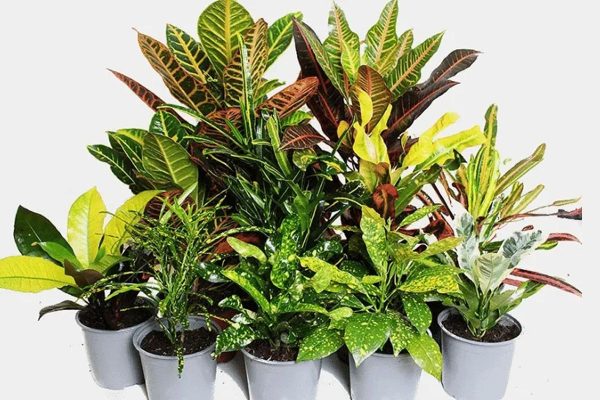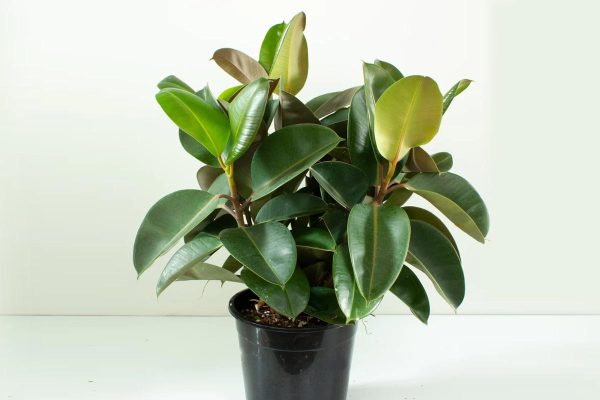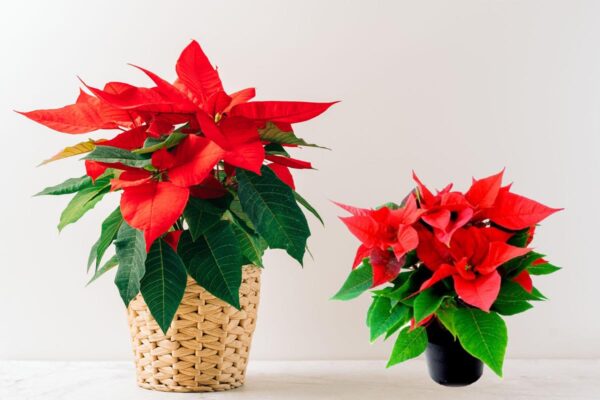Plants
Snake Plant
Introduction / परिचय
Snake plant is very beautiful to look at, as well as it has many such properties, which can protect our health from many dangerous diseases. Snake plant is a plant especially of Asia and Africa. It is also known as Sansevieria trifasciata. The leaves of the snake plant grow upwards and look like the hood of a snake, hence it is called snake plant. It looks like an artificial plant. Snake plant is also called Mother-in-Law's Tongue. The care of this plant is very simple and easy.
| English Name: | Snake Plant |
| Hindi Name: | सान्सेवीरिया (Sansevieria), मदर-इन-लॉं'स टंग (Mother-in-law's Tongue) |
| Scientific Name: | Dracaena Trifasciata |
| Family: | Asparagaceae |
| Kingdom: | Plantae |
| Light : | Flourishes both under bright and low sunlight |
| Height: | 1-4 feet tall |
| flower Color : | Creamy white, light green, light yellow, white, lavender and mauve, bright red |
| Foliage Color : | Dark green color variegated with white and yellow striping |
| Eason Features : |
Varieties / किस्मे
There are more than 70 varieties of snake plant that are native to tropical and sub-tropical regions of Europe, Africa and Asia. All species of this plant are evergreen and can grow anywhere from about 8 inches to 12 feet in height. Some of the most commonly seen species are –
Black Gold
This is a tall variety of snake plant, whose long leaves are dark green in the center and the edges are yellow in color. Its low height variety, which looks like this, is called Black Jack.
Black Robusta
The leaves of this tall variety are dark green in color with light green lines in the center. Its small species is called Futura Robusta, whose height does not exceed 6-8 inches. Its small leaves are spread in a circle.
Golden Hahnii or Birds Nest Snake Plant
This is a small variety with a light green stripe in the center and the broad edges are yellow in colour. This variety requires bright light to grow well. Its height remains up to 6 inches and when it becomes a little dense then it looks like a nest nest.
Cylindrica Snake Plant
The leaves of this variety are thick, round, conical like bamboo shoots which are curved inwards.
Sansevieria Trifasciata Snake Plant
This is the most common species of snake plant. It has dark green leaves with light gray-green horizontal stripes. This species is a native of tropical Africa. It yields a strong plant fiber and is said to have once been used to make bow arrows for hunting.
Bantel’s Sensation Snake Plant
The leaves of the Bantel's Sensation species have vertical white stripes and are about 3 feet long. It is also called white snake plant. Its leaves are slightly narrow
Rhino Grass Sansevieria Desertii
It grows to about 12 inches tall with lush red leaves. It looks like a horn of a rhinoceros, hence it is called Rhino Grass.
Variegated Snake Plant
This is what I see most beautiful in a snake plant. It has a yellow stripe like outside which enhances its beauty.
Twisted Snake Plant
Its leaves are also with yellow stripe and the leaves are twisted. Its length is up to 1 foot.
Also Read This :From Feng Shui to Oxygen Boost: The Multi-Faceted Benefits of Snake Plants
Classification of Plants/ पौधों का वर्गीकरण
The snake plant produces thick, pointed, erect leaves up to 18 inches in height. They are dark green with lighter bands. This plant produces a column of very fragrant, cream colored flowers. The design of its leaves is like a sword. These plants reproduce and spread by underground rhizomes. Its large upright varieties can spread to the point of becoming invasive.
History / इतिहास
Snake plant is a common indoor plant also known as Sansevieria trifasciata. It is mainly found in Asia and Africa. Its cultivation was first started in China. In Africa and Brazil, the snake plant is an important part of their culture and is believed to be associated with gods and goddesses. In ancient times, bow rope is made from its fibers, now it is grown commercially as a house plant.
Uses and Benefits / उपयोग एवं फायदे
- Snake Plant helps in filtering the indoor air i.e. indoor air.
- The snake plant is considered an ideal plant for bedroom decoration as it can help regulate healthy airflow.
- Snake plant also reduces the risk of cancer. This plant absorbs the toxic substances present in the air and the agents that cause cancer. In such a situation, if you keep a snake plant in your house, then it helps in preventing you from dangerous diseases like cancer.
How to Grow Plant / कैसे उगाएं
There are about 70 species of this plant worldwide and all are evergreen. The method of growing it is also very easy. Separate a part of it along with the root and plant it in any drainage soil. If there is no drainage, they can rot. It is a low-maintenance plant that means it requires less sunlight, less water, less care. It does not even require regular fertilization, but if you add a little fertilizer, then good growth will be seen. Plant the snake plant in a strong pot like clay, ceramic because its roots are strong. A weak plastic pot can break off the snake plant's roots as it grows or spoil the shape of the pot.
Also Read This :How to Grow Snake Plant at Home and its Benefits
Soil and Fertilizer
Ordinary soil is sufficient for planting snake plant in pot, just a hole should be made at the bottom to drain out the excess water in the pot. Lay small stones at the bottom of the pot and then fill the soil. If you want your snake plant to grow well, then you should add half soil and half coarse stony sand and some cow dung or organic fertilizer mix in the pot.
A New Plant From snake plant leaves
Cut a leaf from a large plant almost in the middle. This cutting should be about 4-6 inches long. Dip its cut end in rooting hormone or honey and put it in a small pot and give light water. In the next 1-2 weeks, new leaves will start to emerge from the cutting, then move it to a bigger pot. Give some water in 3-4 days. The sun should not be direct or can be kept in the shade.
Plant the cuttings of snake plant in water
Remove cuttings from a snake plant leaf that is large but not too old. Take a 6-7 inch long cutting from the plant and place it in a glass or such a vessel so that the leaf remains straight. Pour enough water into the glass that the cut end of the leaf is submerged about 2-3 inches. You can set it with the help of sticks in such a way that it stands upright in the glass. Change the water of the pot every 2-3 days. In 2-3 weeks, a white root will begin to emerge from the tip of the leaf. When these roots grow at least 3-4 inches, then it can be shifted to a pot.
Plant a new plant from the root of Snake Plant
This is the easiest way to produce a new plant. Many new plants start growing from the roots of the old plant of snake plant. Such spreading roots are called Rhizome which are like ginger in appearance. If you take out a big plant with its root, then you will get such roots. Cut off any good root with at least 1 or 2 leaves with a knife. Now plant it in a new pot. If the plant does not have many roots, then cut the main root into 2 parts and divide it into 2 parts which have a group of 3-4 or more leaves.
How to Take Care/ देखभाल कैसे करे
There are not too many tantrums in the care of snake plant. Irrigate once and wait for the soil to dry up. Add water only after drying. In winter, they need water only once in 2 weeks in a month. If dust sticks to the leaves, wipe them with a cloth soaked in water. Insect moths do not appear in them and they can live in low light also.
Sunlight
This plant requires less sunlight. Direct sunlight is not needed even if you put it outside. Keep it in a place where it gets a few hours of sunlight. It likes only indirect sunlight. You can also keep snake plant in the bathroom, closed room of the house. The light of artificial light like bulbs, LEDs is also sufficient for them.
Water
This plant does not require a lot of water. When the soil of the plant is very dry in appearance and there is no moisture to touch by pressing it with the finger, then water should be added to the snake plant. Water once in a week in summer season and once in two weeks in winter.
Diseases and Pests
Fungal infections or diseases will occur only if water stagnates or excess moisture remains in the roots. Do not give excess water and water does not stagnate. If any leaf has got more disease then pluck it and throw it away. If the disease is spreading in the whole plant, then apply vinegar or alcohol in cotton, cloth and wipe the leaves.
Interesting Facts / रोचक तथ्य
- Apart from Mother-in-Law's Tongue, this plant is also known as Devil's Tongue, Bowstring Hemp, and Good Luck Plant.




